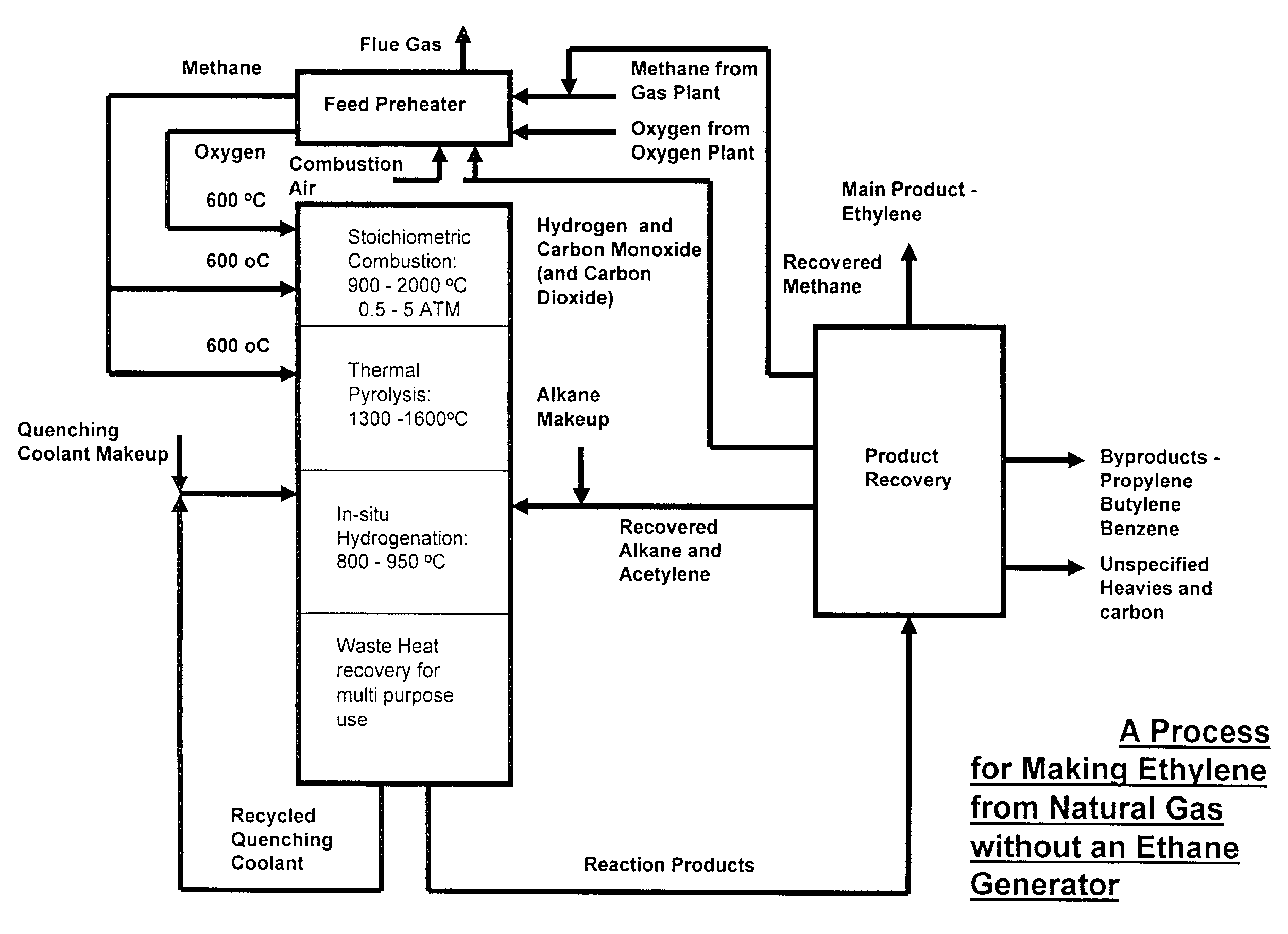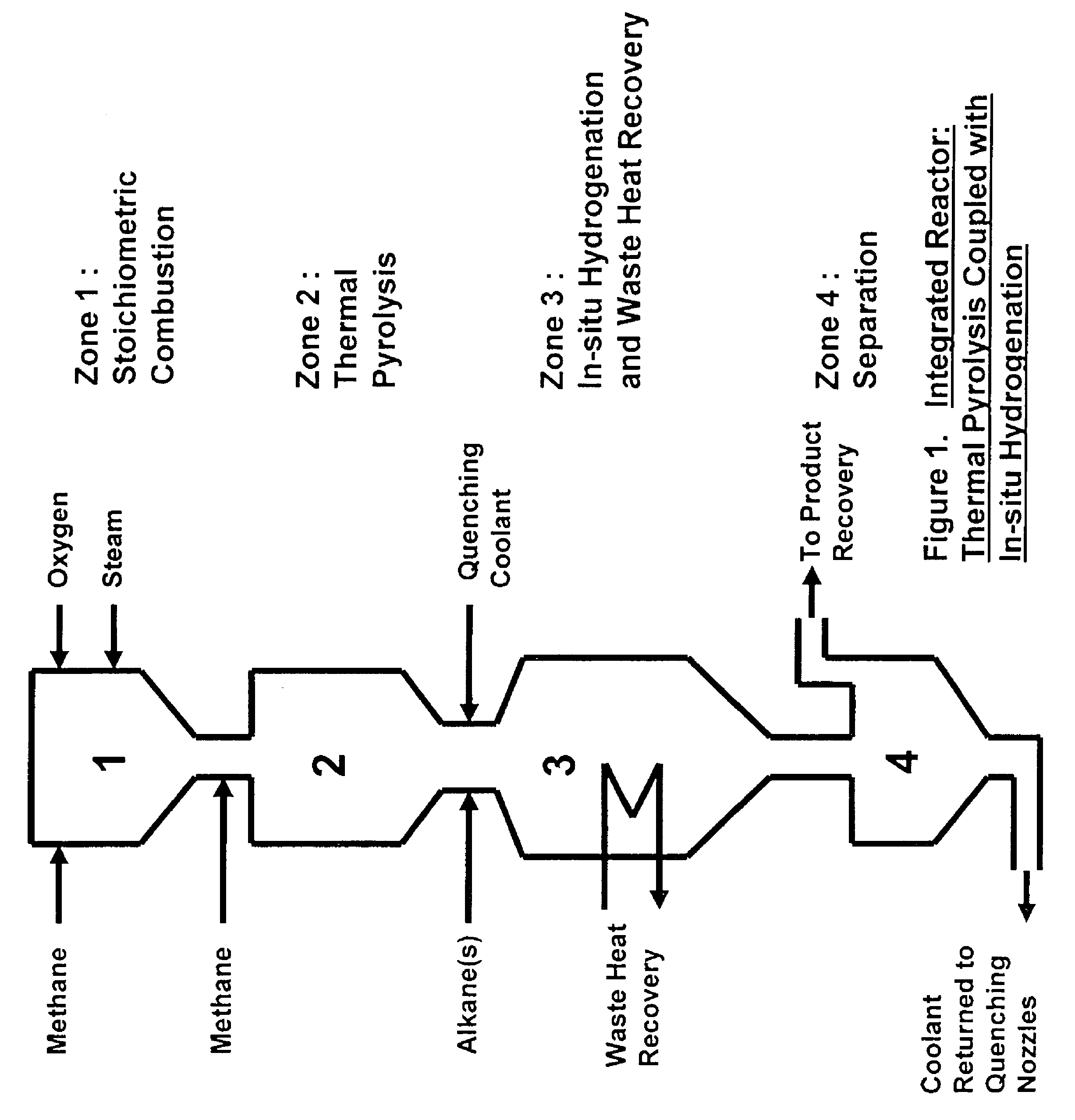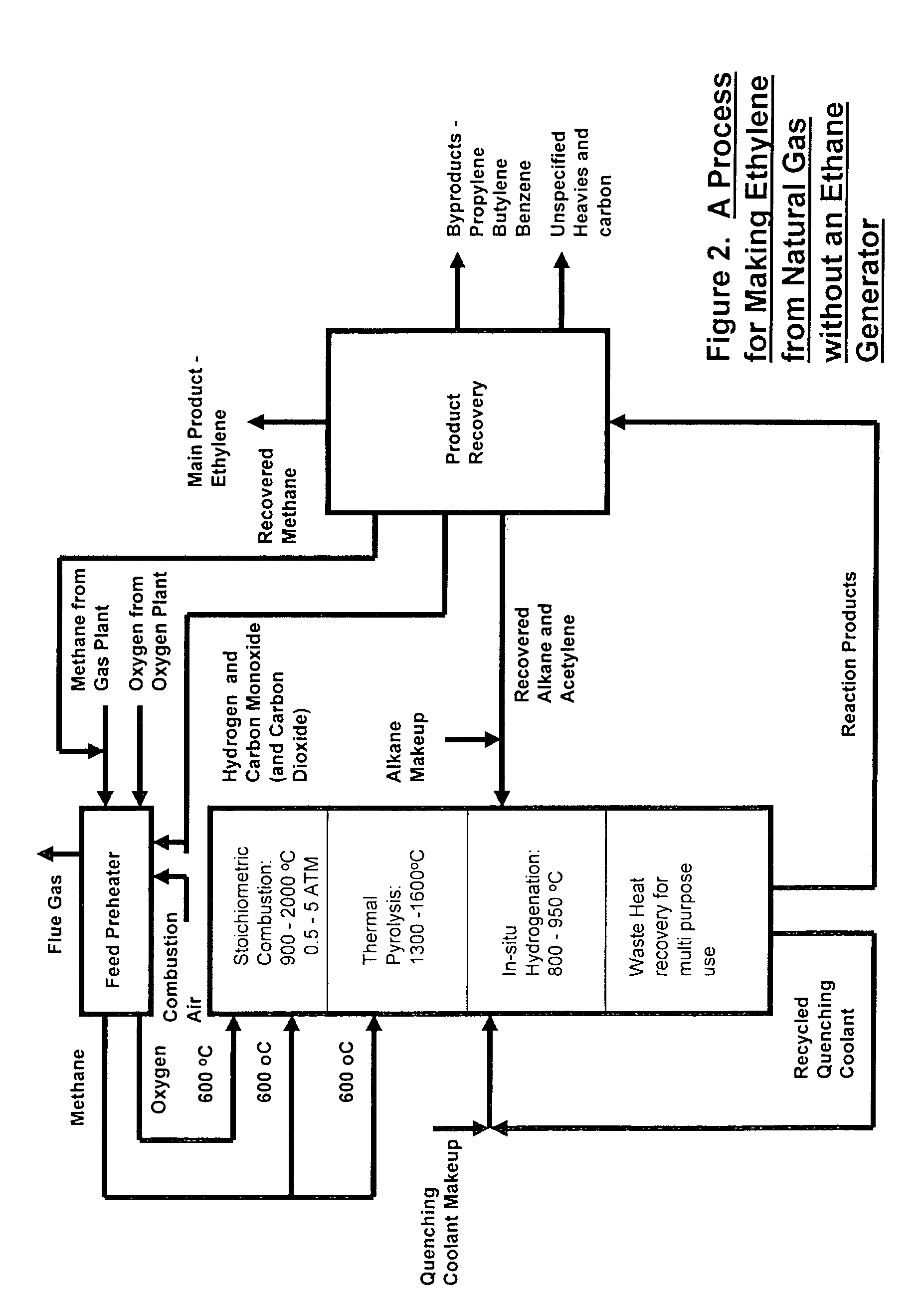Process for the production of ethylene from natural gas with heat integration
a technology of heat integration and ethylene, which is applied in the direction of hydrocarbon preparation, oxygen-containing compound preparation, chemical industry, etc., can solve the problems of inability to completely or effectively eliminate this process, inability to achieve the effect of enhancing the yield of hydrogenation products, and not being economical for mass production of ethylene from acetylen
- Summary
- Abstract
- Description
- Claims
- Application Information
AI Technical Summary
Benefits of technology
Problems solved by technology
Method used
Image
Examples
example 1
[0064]The simplest scheme for utilizing the available heat is the one contrived for preheating the feeds of methane, oxygen and ethane to the combustion, pyrolysis and in-situ hydrogenation zones to 600° C. by using an in-line multiple-stage heat exchanger as a feed pre-heater as shown in FIG. 3. Preheating of the feeds to this temperature is necessary in order to achieve efficient combustion and pyrolysis reactions while it is still below the temperature of ignition which occurs at 645° C. A computer simulation result, table 1, for a hypothetical ethylene plant capacity of 167,000 t / y shows that the waste heat recoverable from the in-situ hydrogenation could easily provide the required preheating energy without recycling and burning of hydrogen and CO that are by-products of the pyrolysis. This simplifies the process while adding by-product credit to the process economics. Part of the quench water is used for cooling down the hot pyrolysis gas to required in-situ hydrogenation temp...
example 2
[0069]Ethane feed to the in-situ hydrogenation zone of the pyrolysis reactor is partially converted to other gas products in the product gas. The unconverted ethane, can be recycled back directly to the reactor from the product recovery section while the make up ethane can be supplied from hydrogenating part of the ethylene to ethane using available commercial hydrogenation catalysts. The make up ethane is recycled back together with excess hydrogen. In this way the ethylene production technology can be based only on the availability of methane feed stock as shown in FIG. 4.
example 3
[0070]In attempting to reduce the impact of “greenhouse effect” caused by the carbon dioxide (CO2) emission from the pyrolysis reaction, a carbon dioxide reforming process can be effectively implemented by utilizing the heat of such a high-temperature reaction of the in-situ hydrogenation of acetylene to ethylene. The CO2 reforming with methane is an endothermic reaction with an optimum temperature which falls upon about 850° C. that is at the lower limit of the temperature range of the effluent from the in-situ hydrogenation zone.
[0071]Thus, it is feasible to recover a large portion of the sensible heat retained in the in-situ hydrogenation product gases as the necessary endothermic heat for the CO2 reforming purpose. A typical embodiment of the process heat integration concept is shown in FIG. 5 and FIG. 6 represents a corresponding block flow diagram. Such an integrated process offers one of the most attractive operation schemes since all of the CO2 generated in the combustion zo...
PUM
| Property | Measurement | Unit |
|---|---|---|
| pressure | aaaaa | aaaaa |
| temperature | aaaaa | aaaaa |
| temperature | aaaaa | aaaaa |
Abstract
Description
Claims
Application Information
 Login to View More
Login to View More - R&D
- Intellectual Property
- Life Sciences
- Materials
- Tech Scout
- Unparalleled Data Quality
- Higher Quality Content
- 60% Fewer Hallucinations
Browse by: Latest US Patents, China's latest patents, Technical Efficacy Thesaurus, Application Domain, Technology Topic, Popular Technical Reports.
© 2025 PatSnap. All rights reserved.Legal|Privacy policy|Modern Slavery Act Transparency Statement|Sitemap|About US| Contact US: help@patsnap.com



